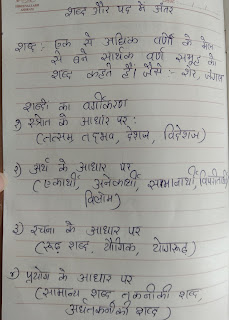science MCQs of chapter motion (physics)
1. The S.I.
unit of force is
A.
Kgm/s
B.
Kgm/s2
C.
Newton
D.
Newton-meter
2. What do we
get by the product of mass and velocity?
A.
Force
B.
Inertia
C.
Momentum
D.
Newton
3. The rate
of change of momentum of an object is proportional to
A.
Mass of the body
B.
Velocity of the body
C.
Net force applied on the body
D.
None of these
4. If two
balls of same masses are dropped on sand, the depths of penetration is same if
A.
Heavier ball is dropped faster than lighter ball
B.
Lighter ball is dropped faster than heavier ball
C.
The product ‘mv’ is same for both bodies
D.
None of these
5. A coin
placed on a card(rested at the edges of the glass) remains at rest because of
A.
Inertia of rest
B.
Two forces act on the coin which balance each other
C.
No unbalanced force acts on it
D.
All of these
6. A force of
50N moves a body,
A.
Friction force exerted on the body is less than 50N
B.
Friction force exerted on the body is more than 50N
C.
None of these
D.
Both of A and B
7. A fielder
giving a swing while catching a ball is an example of
A.
Inertia
B.
Momentum
C.
Newton’s II law of motion
D.
Newton’s I law of motion
8. Action and
reaction forces
A.
Act on the same body
B.
Act on different bodies
C.
Act in same direction
D.
Both A and C
9. When we
are not pedaling the bicycle it stops
because
A.
The earth’s gravitational force acts on it
B.
It is not accelerated
C.
No unbalanced force acts on it
D.
Frictional force acts on it
10. A football
and a stone has same mass
A.
Both have same inertia
B.
Both have same momentum
C.
Both have different inertia
D.
Both have different momentum
11. When body is in motion, ________ always changes.
A.its velocity
B.its acceleration
C.its position vector
D.its momentum
12. A body is moving with uniform velocity. Its
A.speed changes
B.acceleration changes
C.direction of motion changes
D.displacement from origin changes
13. A man is in a car is moving with velocity of 36km/hr.
His speed with repect to the car is
A.10m/s
B.36m/s
C.zero
D.infinite
14. When velocity time graph is a straight line parallel to
time axis then
A.acceleration is const
B.acceleration
is variable
C.acceleration is zero
D.velocity
is zero
15. Area under velocity time graph represent
A.force
B.displacement
C.distance
D.acceleration
16. Slope of velocity time graph is
A.acceleration
B.distance
C.force
D.momentum
17. Instantaneous and average velocities become equal when
body
A.has zero acceleration
B.has
uniform acceleration
C.has variable acceleration
D.moves in a circle
18. Which law of motion is also called law of inertia?
A.1st law
B.2nd
law
C.3rd law
D.all
1st, 2nd and 3rd laws
19. Inertia of an object is quantitative measure of its
A.volume
B.density
C.mass
D.temperature
20. Newtons
laws do not hold good for particles
A.at rest
B.moving slowly
C.move with high velocity
D.move with velocity comparable to
velocity of light
